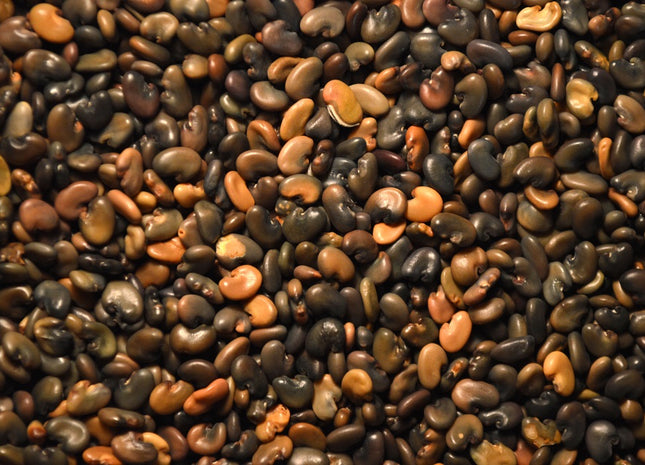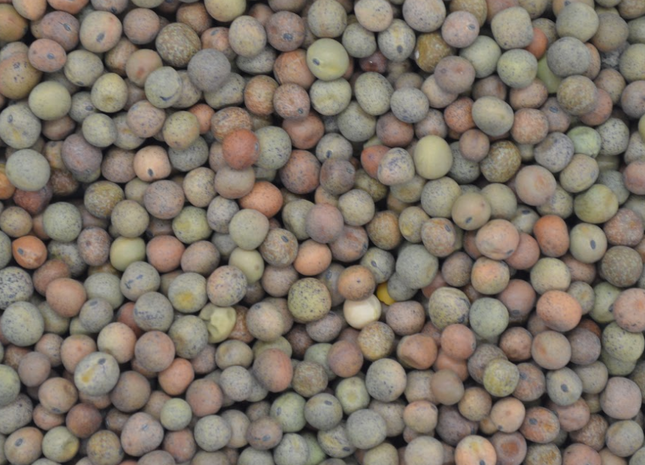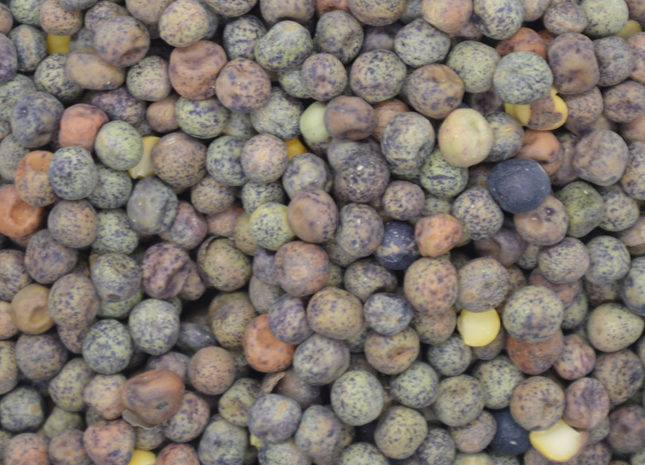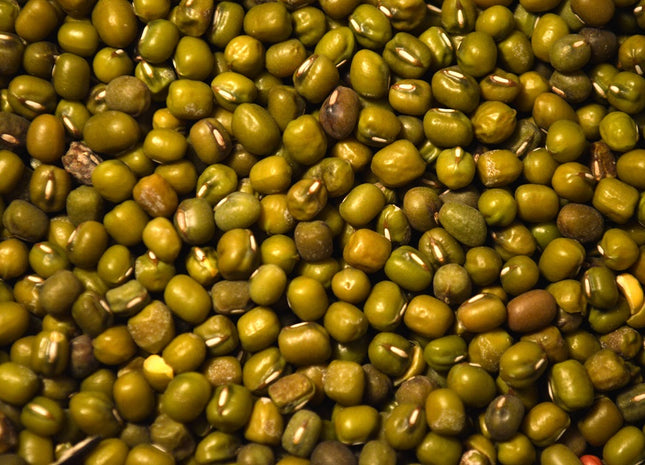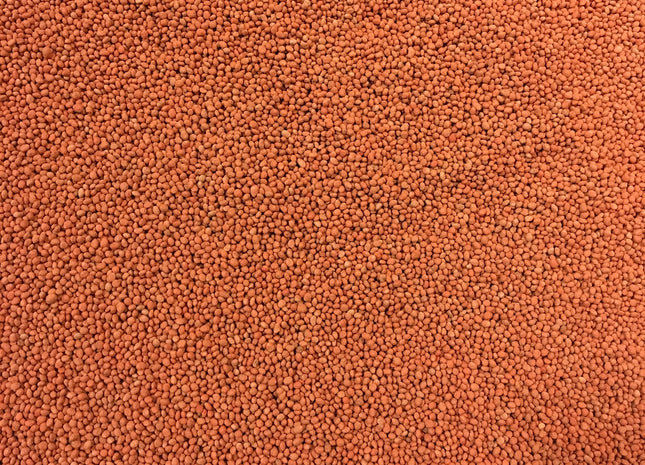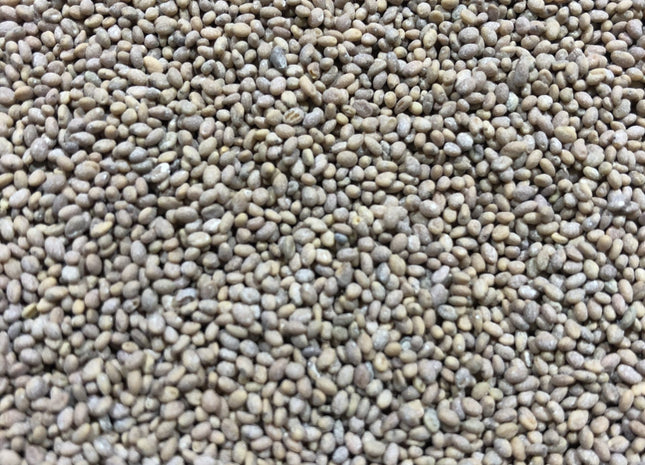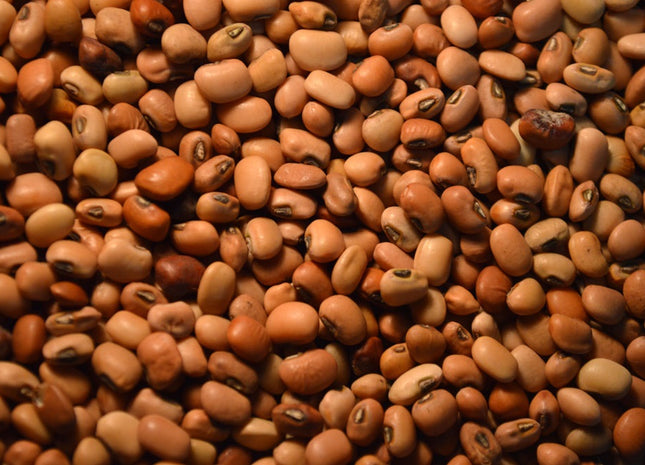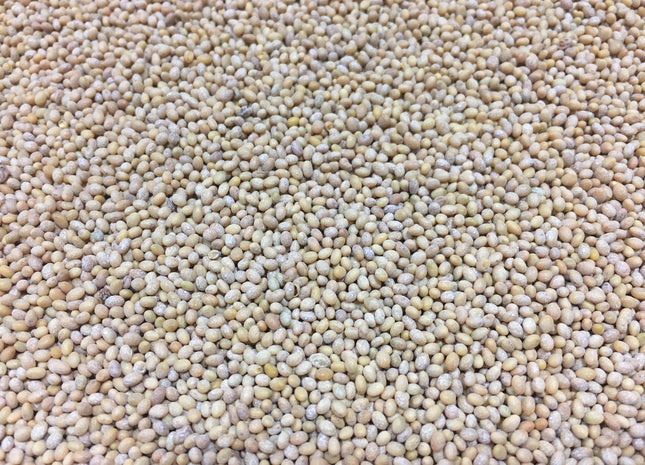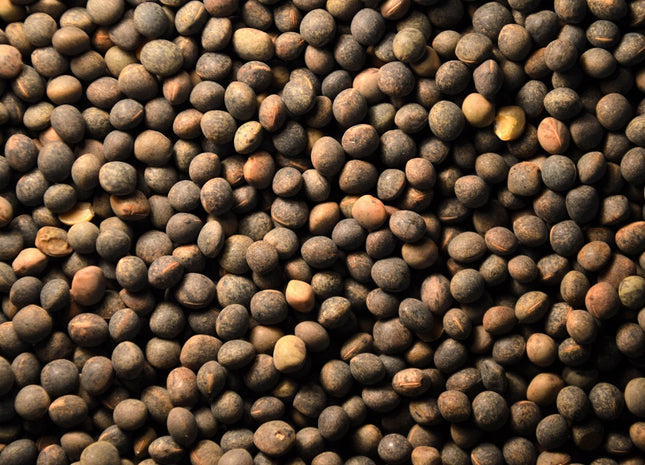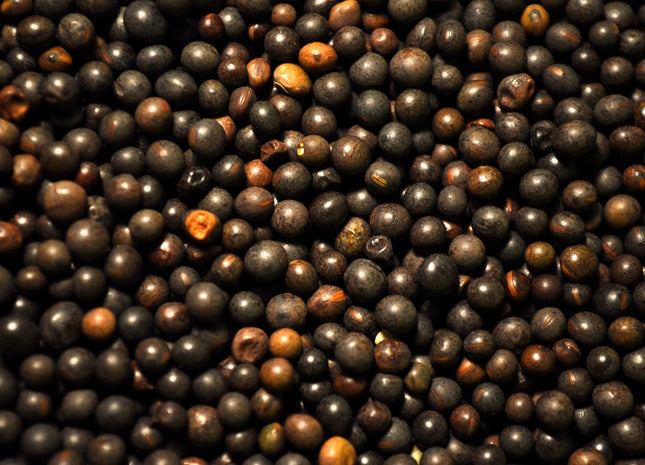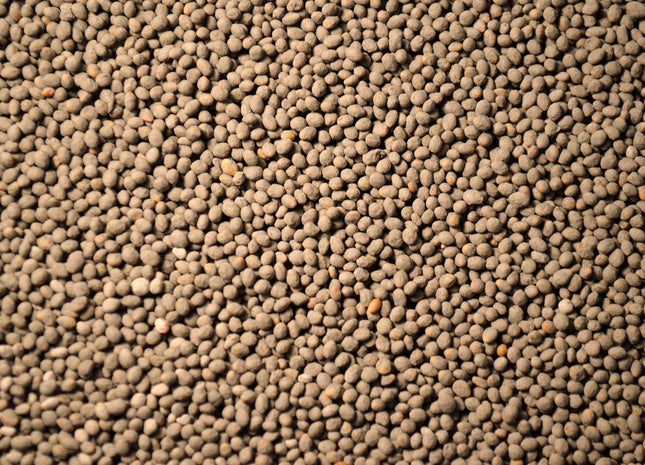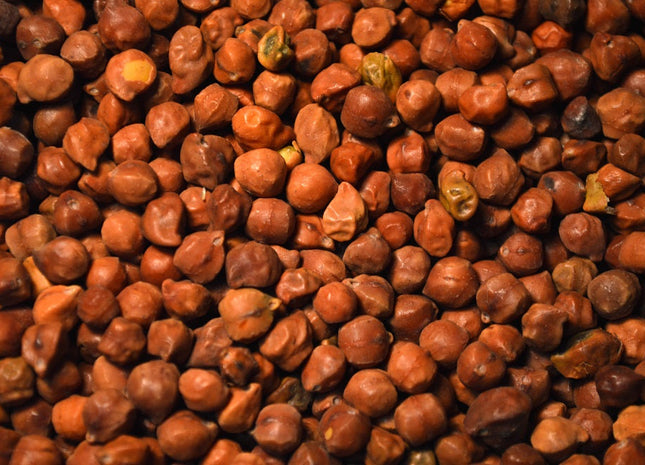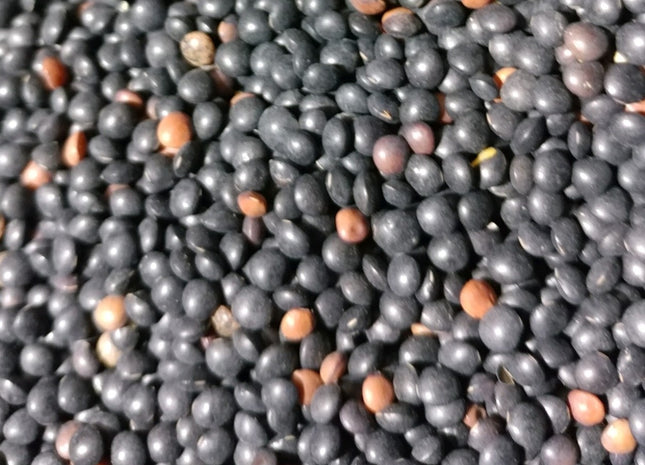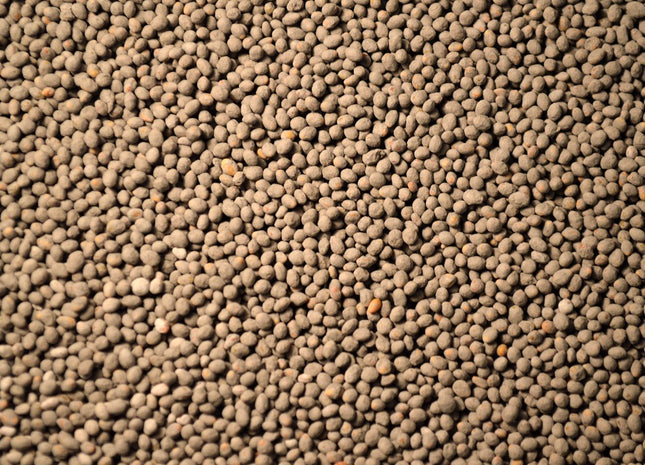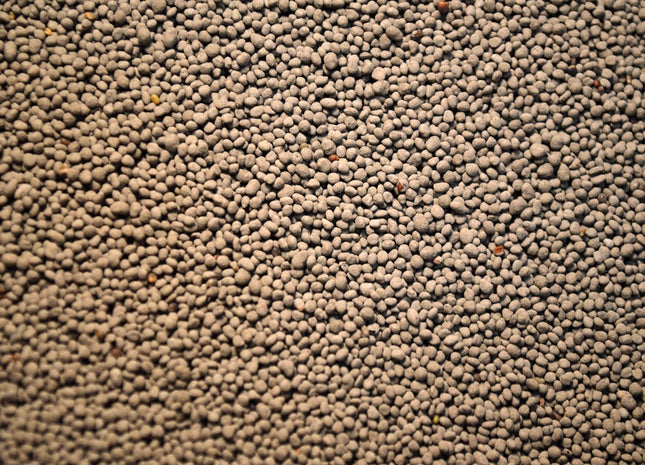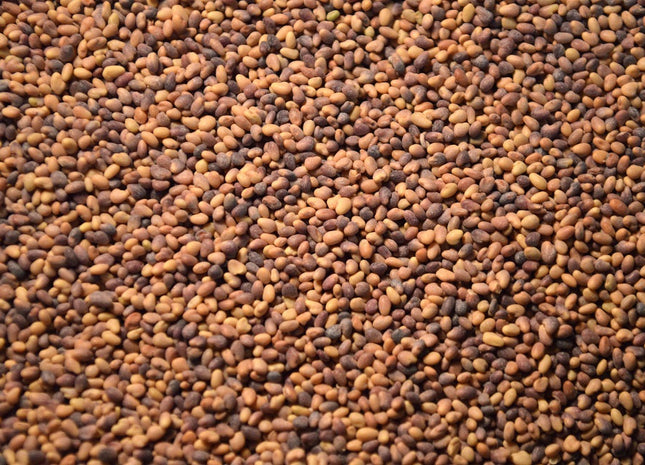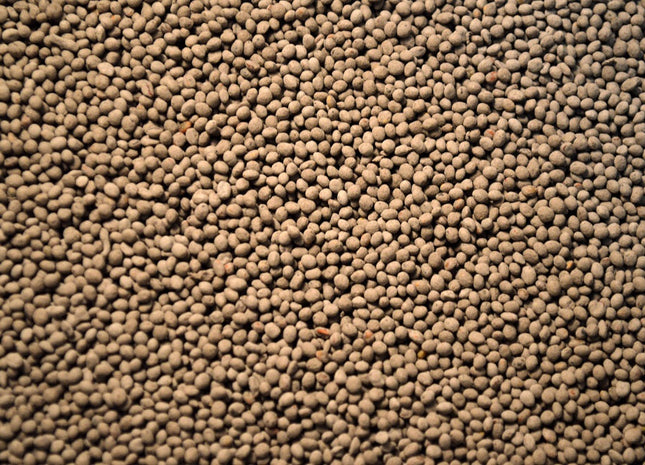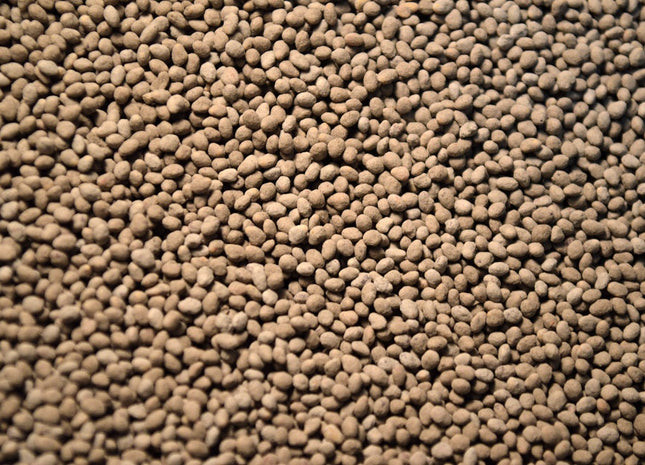Legumes

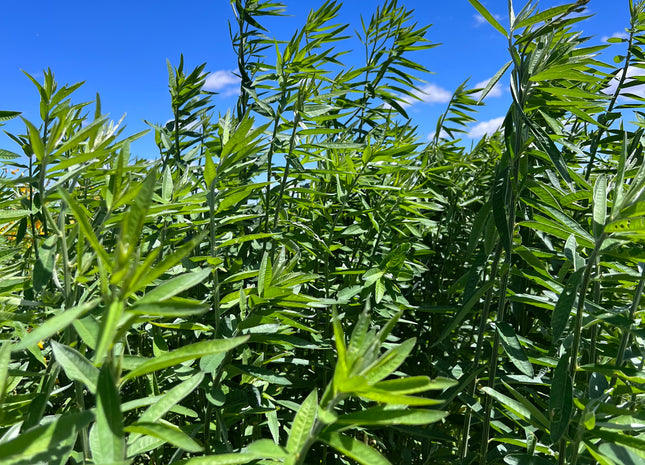
Sunn Hemp
Sunn hemp is an erect, tall growing legume with an anchoring tap root. The leaves are high in protein for grazing and especially popular with small ruminants like sheep, goats, and deer, but cattle will also eat the leaves. The stalk is very lignified making this a poor species to use in a hay mix.
from $1.90 per lb

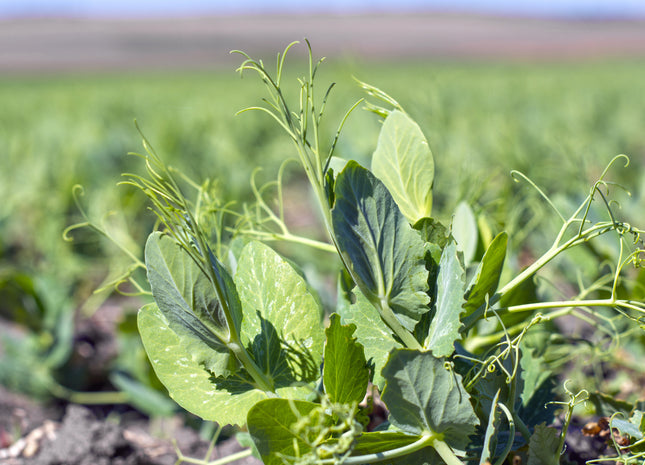
Austrian Winter Peas
Austrian winter peas are good companions to fall mixes, especially when combined with hairy vetch. If planted in early fall, there can be good growth for fall grazing as a protein source in the mix and they will grow much later into the fall than spring peas. In order to maximize winter survival chances, winter peas need to be planted relatively late (about the middle of wheat planting season) and deep, up to 3 inches. These conditions will help protect the growing point of the pea and assists in survival in colder climates.
from $0.80 per lb

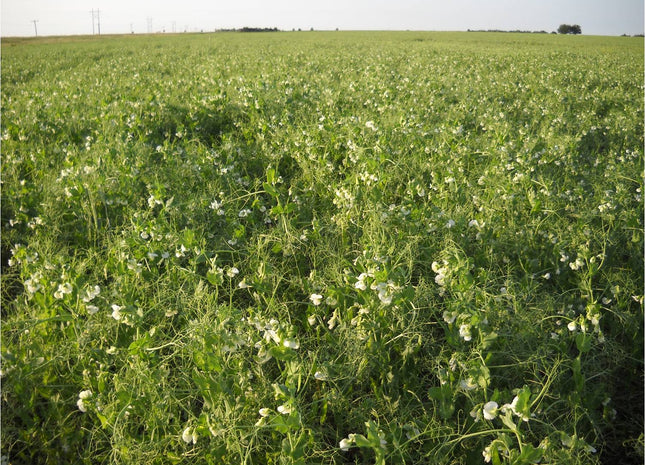
4010 Non-GMO Spring Forage Pea
Spring peas are one of the fastest growing spring legumes. Planted in spring after the harshest winter cold has passed, spring peas will tolerate some light freezing. Peas are commonly planted with oats as a high quality spring feed either for hay or grazing or even a green manure.
from $0.65 per lb

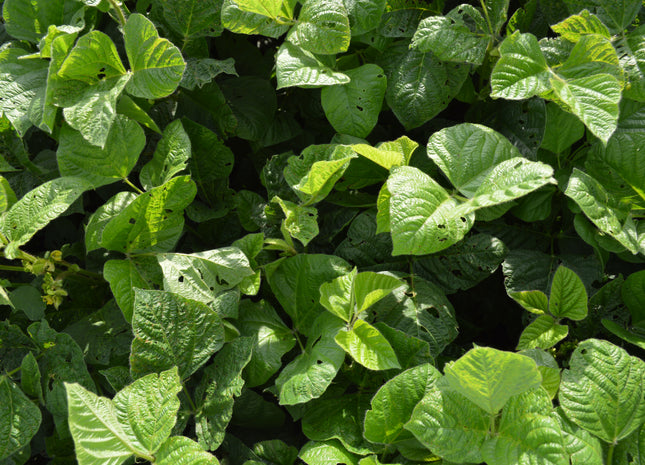
Mung Beans
Mung beans are a warm-season legume known for their remarkable heat tolerance and drought resistance. They exhibit rapid growth, maturing in just 65 days. One advantage of mung beans over cowpeas is that their seed pods remain intact, unlike cowpeas, making them an excellent source of late-fall protein for grazing livestock or wildlife. However, it's important to note that mung beans are highly susceptible to cold weather and require a minimum of 60 frost-free days to ensure successful growth. They can be used for both hay production and grazing and are compatible with peanut inoculant. Mung beans typically reach a height of around 3 feet and have a low to medium water usage. Their strengths lie in nitrogen fixation, forage production, and hay production.
from $1.23 per lb

Fixation Balansa Clover - Nitro Coat OMRI
FIXation balansa clover is the most cold-tolerant annual clover, surviving temperatures as low as -14. Where it does overwinter, FIXation is capable of growing over 200 lbs of nitrogen biomass and it even has a hollow stem making it an option for roller crimping. This can also be used for a high yielding, high protein feed before transitioning to the next summer crop. To have the best chance at winter survivability, plant earlier than other overwintering species. For more information on FIXation balansa clover visit https://fixationclover.com.
from $3.20 per lb

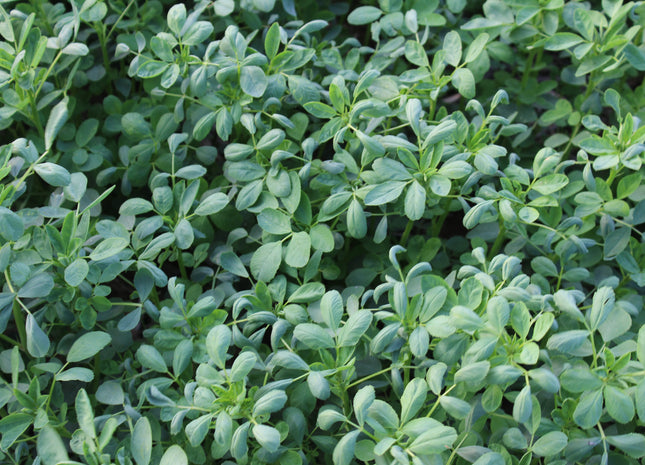
Hubam White Sweet Clover - OMRI Inoculated
Hubam White Sweet Clover can produce up to 9,000 lbs dry matter per acre over a summer after being oversown into a grain crop or direct seeded with a spring grain nurse crop. While its taproot is shorter and more slender than that of its biennial cousins, it still loosens subsoil compaction. Annual sweetclovers work best in the Deep South, from Texas to Georgia as they are not frost tolerant. There, they establish more quickly than the biennial types and produce more biomass in the seeding year in southern regions.
from $3.80 per lb

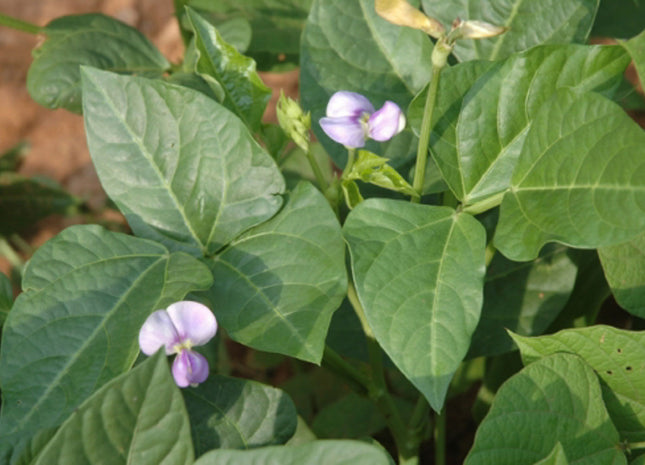
Cowpeas (Iron & Clay)
Cowpeas are one of the most popular warm season legumes. They love the heat, they tolerate drought, and they offer nitrogen fixation in a soil building mix, or higher protein in an annual grazing mix. Cowpeas have a long maturity which means when they are planted at the beginning of summer, they can achieve a lot of growth before temperatures cool down into fall.
from $1.25 per lb

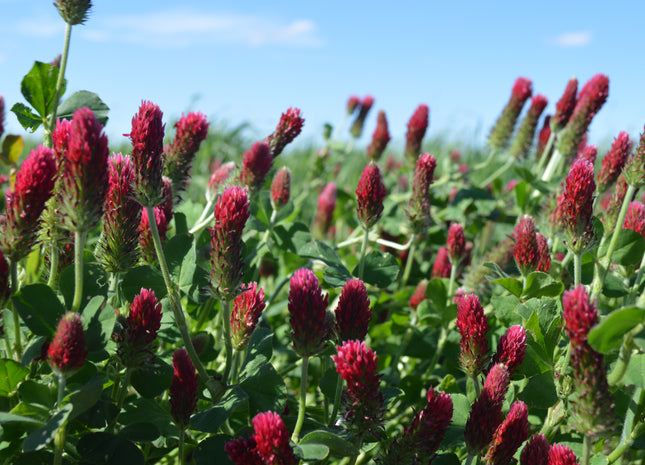
Crimson Clover (Kentucky Pride) - OMRI Inoculated
Kentucky Pride is an improved variety of crimson clover selected for more cold tolerance and more production (taller, deeper roots, more basal leaves and more tillering) than varieties like Dixie. Kentucky Pride crimson clover is a very fast establishing clover.
from $3.05 per lb

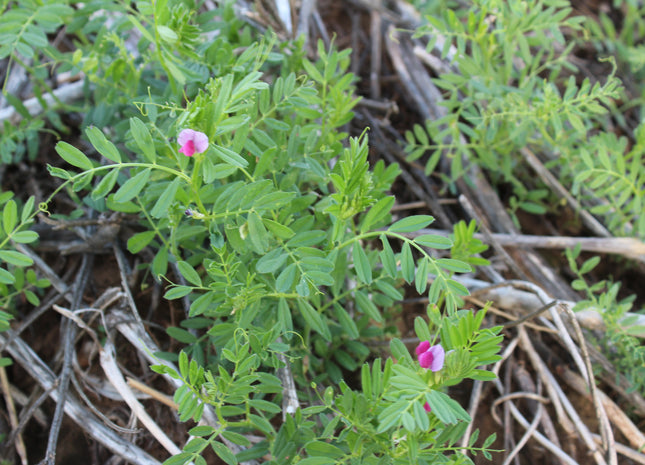
Common Vetch
Common vetch, is a valuable cover crop widely used in the industry. As a leguminous plant, it provides nitrogen fixation, improving soil fertility. Common vetch's extensive root system prevents erosion and helps control weeds, making it a natural choice for sustainable farming. It enhances soil quality by adding organic matter, supports crop rotation systems, and provides early-season ground cover. Additionally, it can serve as a habitat for wildlife and, in some cases, offer forage for livestock. Common vetch's cold tolerance makes it suitable for various climates, but it is not nearly as cold tolerant as that of Hairy vetch.
from $1.60 per lb

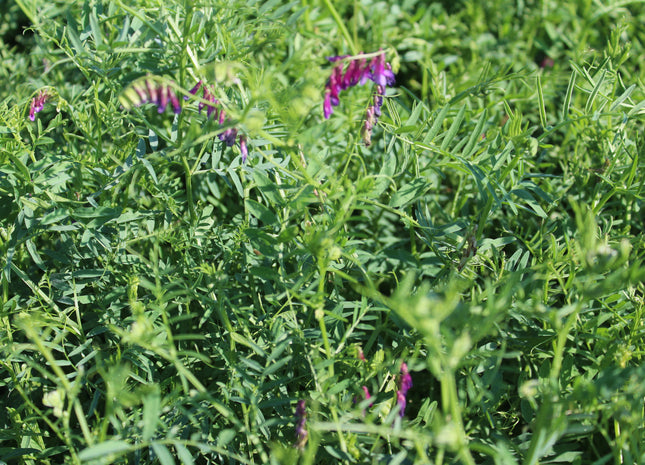
Hairy Vetch
Hairy vetch is the most cold tolerant winter annual legume. Tolerating temperatures as low as -30 degrees, this is best planted before the first frost in the fall and then it will resume growth in the spring. Hairy vetch is slower to green up and has slower spring growth compared to cereal rye and wheat but once it does get going, it grows very fast, doubling it’s growth each week through the month of May. With patience and a delayed corn planting, a full stand of vetch can consistently produce over 200 lbs of nitrogen in its biomass. As part of a winter cover crop or forage mix, vetch is commonly grown with rye or triticale.
from $2.45 per lb

Winter Lentil (Morton)
Winter lentils are a lesser used species but offer several benefits. Lentils are relatively low growing and modest in their growth however, they consistently overwinter in Zone 5B where winter temperatures can drop below -25 degrees F. Winter lentils can be added with winter cereals and other winter legumes to have a more diverse overwintering cover crop.
from $1.05 per lb

Balady Berseem Clover - OMRI Inoculated
Berseem clover produces a non-bloating, high quality forage, that's more palatable than alfalfa. Berseem forage has been observed to maintain a CP content of 28-30% throughout harvesting regiments, which is slightly higher than crimson clover or alfalfa. Berseem clover has low water requirements and can provide strong biomass recovery after being mowed. A rapidly, consistent stand can be achieved because germination can occur in just 7 days and minimal hard seed counts. This clover produces flowers which are self-sterile so reseeding is not a concern. These flowers do provide a great pollen source, which is highly sought after by honeybees. Berseem can be controlled easily with glyphosate or when planted in colder regions will winterkill. With good shade tolerance, this species can be utilized for interseeding into crop systems or forage mixtures.
from $2.45 per lb

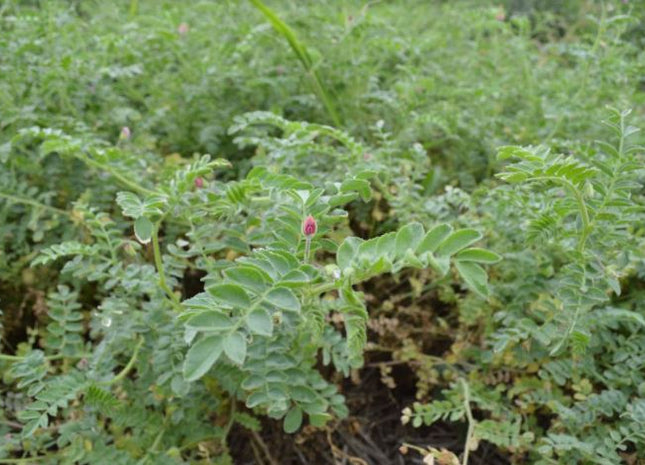
Chickpeas (Desi)
As the most heat tolerant of the cool season legumes, chickpeas offer a versatility that can be used in both warm and cool season mixes. Though not a great biomass producer, chickpeas are very drought tolerant and can help cover the ground in the midst of a summer drought. This taprooted plant can be used with grasses to add diversity and help break up compaction. As a legume, chickpeas will also fix nitrogen into the soil.
from $0.75 per lb

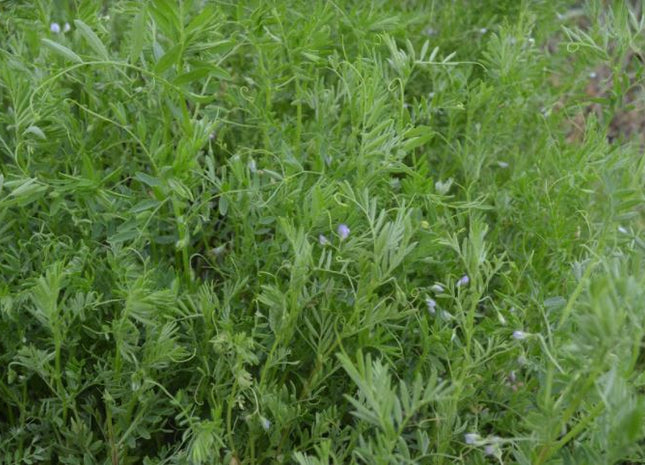
Spring Lentil
Lentils thrives in cool, dry conditions where they can remain relatively free of disease hence, they are commonly grown in the norther Great Plains. With a shallow rooting structure that doesn't have the ability to reach subsoil moisture, lentils are a great option in front of cereals or deep rooting crops. If excessive moisture is present during the growing season it will delay plant maturity. This will be excellent for producers who want to plant a summer fallow mixture where the mix can continue to grow under ideal conditions. Lentils are known for their ability to emerge through thick cereal stubble due to their strong seedling vigor. With rapid seed germination, seedlings generally out grow the threat of insects or disease pressure during establishment. Lentils can also house mycorrhizal fungi. Mature lentil straw can be an option for feed as it is much higher in CP, digestibility and palatability when compared to cereal straws.
from $1.05 per lb

Sainfoin - OMRI Exceed Pre-Coat
Sainfoin produces most of its growth in the spring, with little production in summer or fall. It has beautiful pink clusters of flowers and is an excellent honey plant. In areas where alfalfa makes two cuttings or fewer, sainfoin will exceed alfalfa in production. In warmer areas its yield is much less than alfalfa. Newer varieties such as Shoshone are much better than older ones at yield, regrowth and persistence. Can be used as bloat prevention in alfalfa fields. Used extensively in the Northern Plains in place of alfalfa. It does not tolerate heavy grazing very well.
from $2.80 per lb

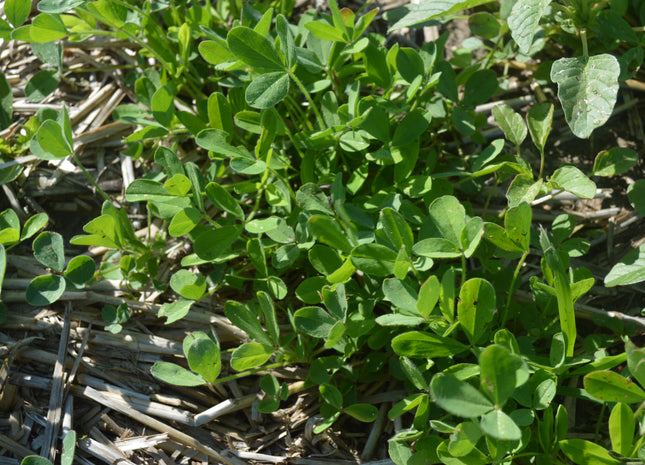
Berseem Clover (Frosty) - OMRI Coated
Berseem clover is a Mediterranean type that is salt tolerant, nitrogen fixing, and does well on light textured, sandy soils. Compared to other varieties of berseem clover, Frosty is later maturing, more cold tolerant, more productive, and has greater nutritional value. Frosty berseem clover can be overseeded into thinning stands of alfalfa as it looks very similar (before it blooms white) and it has excellent regrowth after cutting. For more information on Frosty berseem clover visit https://frostyclover.com.
from $3.55 per lb

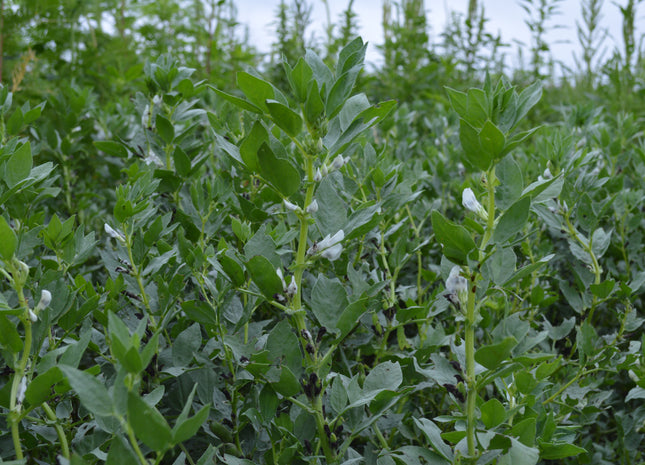
Felix Faba Beans
Faba beans are one of the oldest plants under cultivation, having been grown in ancient Greece and Rome. Unlike other beans, they prefer cool weather, allowing them to be planted — and harvested — much earlier. Faba beans have a distinct flavor and creamy texture that make them a fine ingredient for a wide variety of dishes. This legume is a natural, organic fertilizer (called a green manure) that fixes nitrogen in the soil for other plants to use. By planting faba beans in your garden, food plot or field, you can improve soil fertility at the same time without needing to add other fertilizers and amendments.
from $0.85 per lb

Alsike Clover (OMRI Inoculated)
Alsike clover is a perennial that thrives in low lying ground. For pastures or meadows with poor drainage and occasional water logging, this would be the first clover to try. Growing 2-4 feet tall with pink flowers, this adds a pollinator attracting and nitrogen fixing species to perennial pasture mixes. It should be considered that alsike clover can be toxic to horses.
from $4.00 per lb

Arrowleaf Clover (Blackhawk) OMRI Coated
Arrowleaf clover is a cool season, reseeding annual legume. It is a multiple purpose plant material that can be used for grazing, hay production, a wildlife food source, soil improvement and a winter cover crop. Forage quality is high with digestibility generally superior to crimson clover at all stages of maturity. Deer and turkey readily feed on Arrowleaf clover.
from $3.15 per lb

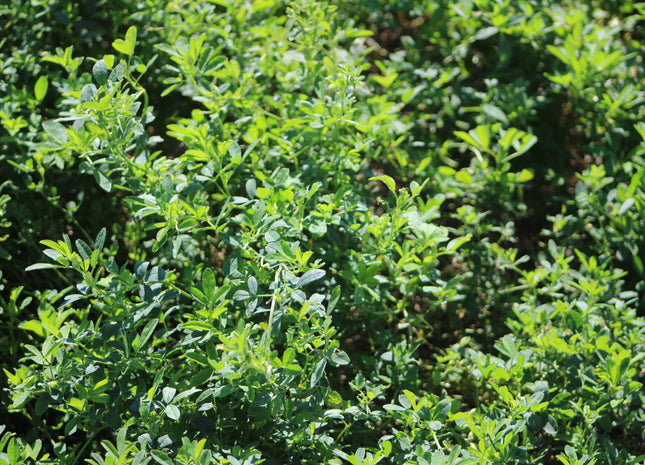
Alfalfa (Vernal) - ORMI Inoculated
Alfalfa is the most common and most productive perennial legume. It is usually used as a perennial monoculture for hay but at low rates and with good rotational grazing, alfalfa can also be used in pasture mixes to boost diversity and animal performance.
from $3.30 per lb

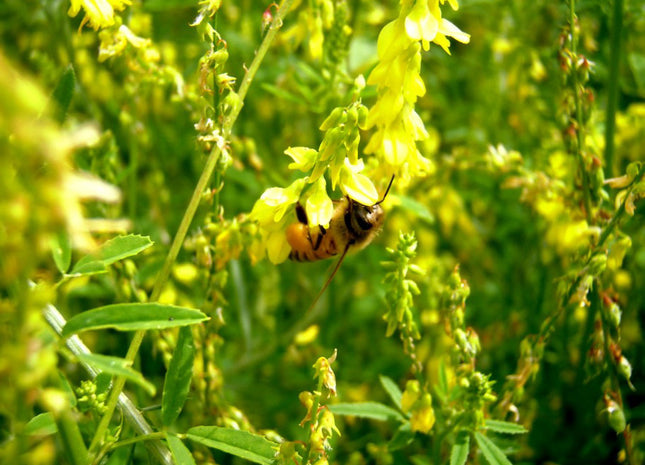
from $3.70 per lb

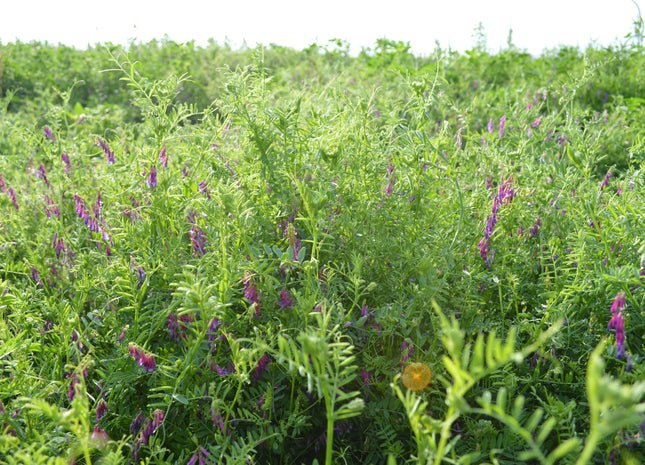
Woolly Pod Vetch (Aussie)
Woollypod vetch has the potential to grow faster and earlier than hairy vetch. This vetch has been observed to produce more biomass than many other vetches and fixation of N could even start within a week of emergence. When allowed to overwinter, the extra growth aids in smothering out weed competition and protecting the soil. Woollypod vetch excretes root exudates that can reduce the growth of small grasses. Positive yield responses in corn have been documented when planted after Woollypod vetch and there is no known hazards of increasing insect pest issues.
from $12.99 per lb

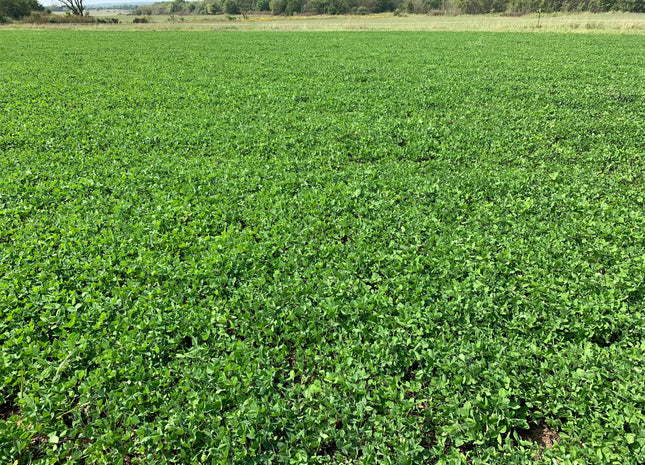
Solid Medium Red Clover - OMRI Inoculated
With similar forage yields, crude protein and better digestibility when compared to alfalfa, red clover can be an excellent forage alternative to add to your operation. You can harvest your first cutting 60-70 days after a spring seeding and on every 30-35 day intervals after initial harvest. With its vigorous spring growth, this clover has the capability of suppressing weeds. Red clover is less invasive than white clover because of its shorter life span and the lack of rhizome or stolon rooting structures. It's deep taproot can extend up to 3ft into the soil profile and finer rooting structure in the top 5" can really aid in breaking up compacted soils. Red clover flowers are known to attract many pollinator and benefical insect species. If P leaching is a concern, red clover has been observed to leach only 1/3-1/5 the amount of P as ryegrass or radishes.
from $4.30 per lb

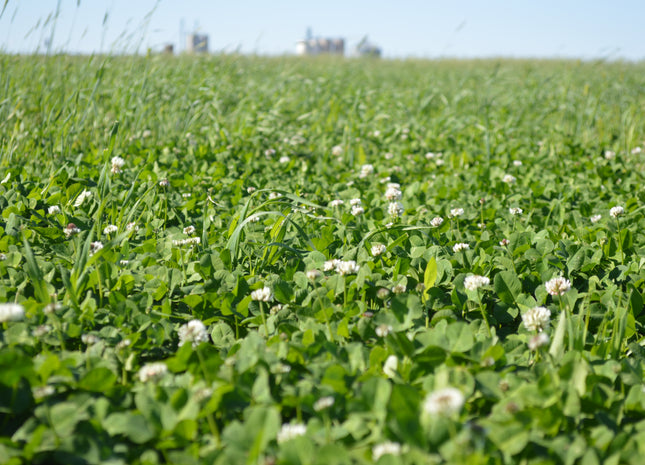
White Clover (Stamina Ladino) OMRI Coated
White Clover is an excellent choice for a perennial clover. The Stamina variety was developed to be more heat and drought tolerant than most other white clovers. Being a legume this plant can cause bloat, but rarely when it is in a mix with grasses. White clover is also a great choice for areas that have saturated soils.
from $6.00 per lb

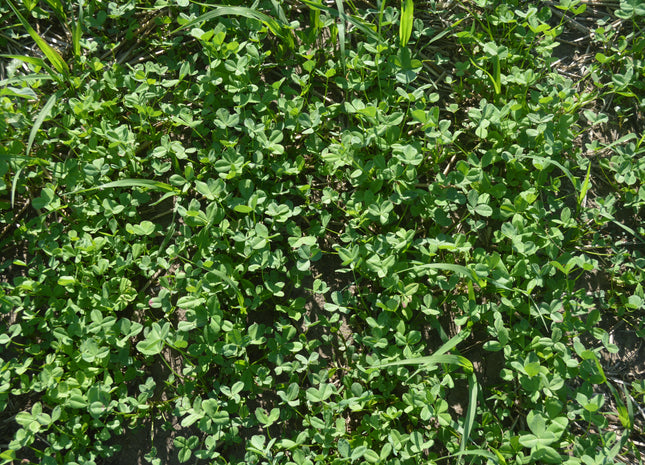
eNhance Persian Clover - OMRI Inoculated
Every aspect of this plant supports its reputation for excellent forage quality. Mature stems are soft, hollow and have thin structural plant cell walls, leading it to be more digestible than red clover or alfalfa. Some common forage tests boast CP 16-21% and IVDMD 63-78%. Not to mention, studies have show persian clover to be more palatable than rape, alfalfa, fescue or perennial ryegrass. High productivity during March- April, provides excellent regrowth potential following grazing or the ability to support two spring hay cuttings. Given the right circumstances, one could expect persian clover to naturally reseed and be redistributed by wind/water via its very mobile, light weight, seed pods. Spring flowers are known to also attract flower flies, which larva are a leading predator of aphids. Learn more about eNhance Persian Clover here.
from $3.55 per lb

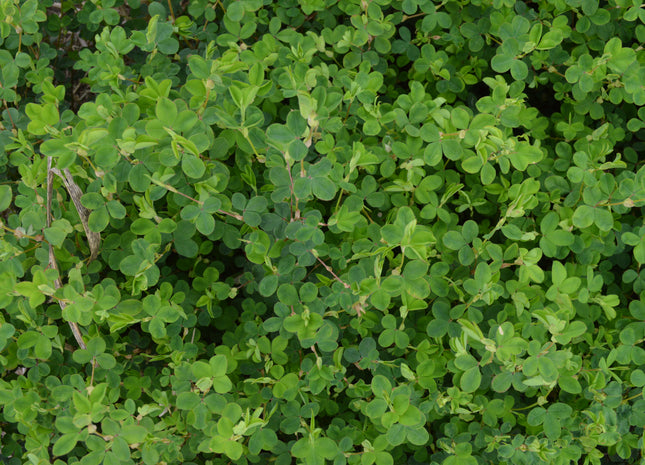
Korean Lespedeza
Korean lespedeza is a low growing warm season annual legume known for it's ability to tolerate acidic and low fertility soil. They do most of their growing in the months of July and August. Though not high yielding, Korean lespedeza is very highly palatable and does not cause bloat. Annual lespedeza is a small seeded annual legume. Korean lespedeza can be frost seeded or drilled into pastures in midwinter or early spring, emerging in summer, or similarly seeded into a growing wheat crop for a hay or pasture crop after wheat harvest.
from $2.55 per lb

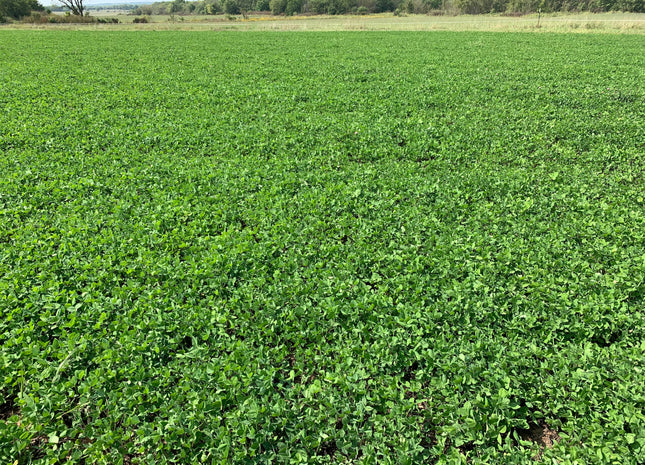
Blaze Red Clover - OMRI Inoculated
With similar forage yields, crude protein and better digestibility when compared to alfalfa, red clover can be an excellent forage alternative to add to your operation. You can harvest your first cutting 60-70 days after a spring seeding and on every 30-35 day intervals after initial harvest. With its vigorous spring growth, this clover has the capability of suppressing weeds. Red clover is less invasive than white clover because of its shorter life span and the lack of rhizome or stolon rooting structures. It's deep taproot can extend up to 3ft into the soil profile and finer rooting structure in the top 5" can really aid in breaking up compacted soils. Red clover flowers are known to attract many pollinator and benefical insect species. If P leaching is a concern, red clover has been observed to leach only 1/3-1/5 the amount of P as ryegrass or radishes. Learn more about Blaze Red Clover here.
from $4.30 per lb

